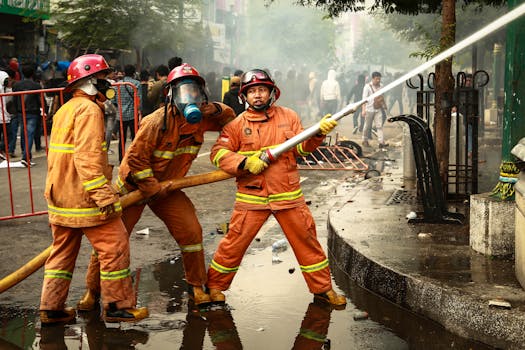+17162654855
+17162654855
NRP Publication News serves as an authoritative platform for delivering the latest industry updates, research insights, and significant developments across various sectors. Our news articles provide a comprehensive view of market trends, key findings, and groundbreaking initiatives, ensuring businesses and professionals stay ahead in a competitive landscape.
The News section on NRP Publication News highlights major industry events such as product launches, market expansions, mergers and acquisitions, financial reports, and strategic collaborations. This dedicated space allows businesses to gain valuable insights into evolving market dynamics, empowering them to make informed decisions.
At NRP Publication News, we cover a diverse range of industries, including Healthcare, Automotive, Utilities, Materials, Chemicals, Energy, Telecommunications, Technology, Financials, and Consumer Goods. Our mission is to ensure that professionals across these sectors have access to high-quality, data-driven news that shapes their industry’s future.
By featuring key industry updates and expert insights, NRP Publication News enhances brand visibility, credibility, and engagement for businesses worldwide. Whether it's the latest technological breakthrough or emerging market opportunities, our platform serves as a bridge between industry leaders, stakeholders, and decision-makers.
Stay informed with NRP Publication News – your trusted source for impactful industry news.
Communication Services

**
Crowd Management Strategies: Preventing Chaos and Ensuring Safety at Large Events
Large gatherings, from concerts and festivals to sporting events and political rallies, present unique challenges. The potential for chaos and even tragedy is real if crowd flow isn't effectively controlled. Efficient crowd management isn't just about preventing bottlenecks; it's about ensuring the safety and well-being of attendees and maintaining a positive experience for everyone. This article explores effective strategies for crowd control and highlights the crucial role of proactive planning and preparedness in preventing disasters.
Poor crowd management can lead to a range of serious consequences, including:
Bottlenecks and congestion: Narrow entry and exit points, inadequate signage, and a lack of crowd flow guidance can create dangerous bottlenecks, leading to stampedes and injuries. This is particularly true during high-traffic periods such as entry and exit times or during emergencies.
Safety hazards: Overcrowding can lead to suffocation, dehydration, and heatstroke, especially in confined spaces or during extreme weather conditions. The risk is amplified in situations with limited access to emergency services.
Security breaches: Uncontrolled crowds can be vulnerable to security threats, making them easier targets for criminal activity or terrorism. Effective crowd management is crucial for maintaining security and preventing unauthorized access.
Negative public perception: A poorly managed event can damage the reputation of the organizers and impact future attendance. Negative press coverage and social media fallout can significantly affect the event's success and long-term viability.
Legal liability: Organizers can face significant legal liability for injuries or fatalities resulting from inadequate crowd control measures. This underscores the importance of proactive planning and compliance with safety regulations.
Effective crowd management requires a multi-faceted approach that addresses various aspects of event planning and execution. Here are some key strategies:
Capacity Planning: Accurately estimating the expected attendance is crucial. This informs decisions on venue selection, infrastructure requirements, and staffing levels. Utilizing advanced crowd simulation software can provide valuable insights.
Venue Selection and Design: Choosing a venue with sufficient space, appropriate entry and exit points, and clear sightlines is paramount. The design should facilitate smooth crowd flow and minimize congestion points.
Emergency Planning: Developing a comprehensive emergency plan is non-negotiable. This should include evacuation procedures, communication protocols, and designated assembly points. Regular drills and training for staff are essential.
Security Protocols: Implementing robust security measures, including security personnel, CCTV cameras, and metal detectors, is vital for crowd safety and security. This helps prevent unauthorized access and potential threats.
Signage and Wayfinding: Clear and concise signage, along with intuitive wayfinding systems, are crucial for guiding attendees and minimizing confusion. This includes directional signage, emergency exits, and designated areas for specific activities.
Crowd Monitoring: Real-time monitoring of crowd density using CCTV cameras, sensors, and crowd analytics software is essential for identifying potential congestion points and responding proactively.
Staffing and Deployment: Adequate staffing levels with well-trained personnel are critical for managing crowd flow, addressing queries, and responding to emergencies. Clear communication and coordination between staff members are crucial.
Communication and Information Dissemination: Regular updates and information dissemination through announcements, digital displays, and social media are vital for keeping attendees informed and managing expectations.
Crowd Control Techniques: Employing trained personnel to guide and direct crowds, manage queues, and prevent bottlenecks is essential. This may include the use of barriers, ropes, and designated walkways.
Incident Management: Having a clear plan for responding to incidents, such as medical emergencies or security breaches, is critical. This includes rapid response teams, first aid stations, and communication channels for coordinating efforts.
Data Analysis: Analyzing attendance data, crowd flow patterns, and feedback from attendees is crucial for identifying areas for improvement in future events.
Debriefing and Review: Conducting post-event debriefings with staff and stakeholders allows for identifying lessons learned and making necessary adjustments to future crowd management plans.
Continuous Improvement: Continuously evaluating and improving crowd management strategies is an ongoing process that ensures the safety and enjoyment of attendees at future events.
Technology plays an increasingly important role in modern crowd management. This includes:
Crowd analytics software: Utilizes data from various sources, such as CCTV cameras and sensors, to provide real-time insights into crowd density and movement.
Mobile apps: Can provide attendees with information on event schedules, maps, and emergency procedures.
Social media monitoring: Tracks social media conversations to identify potential issues or safety concerns.
Predictive modeling: Uses historical data to predict potential crowd behavior and assist in proactive planning.
By implementing these strategies and leveraging the power of technology, event organizers can significantly improve crowd flow, reduce the risk of chaos, and create a safer and more enjoyable experience for all attendees. Proactive planning, effective communication, and continuous improvement are crucial for successful crowd management. Ignoring these aspects can lead to disastrous consequences, highlighting the critical need for a comprehensive and robust approach to ensuring safety and order at large events.